Yuko Mohri, one of Apollo’s 40 Under 40 Asia Pacific artists, makes delicate and challenging installations out of everyday materials. She talks to Amandas Ong about her new exhibition at White Rainbow, London.
What does the title of the show (and the installation), ‘Moré Moré, mean?
The Japanese language is rich in onomatopoeia – for example, ‘zaa zaa’ is the sound of rain falling, and ‘potsu potsu’ is the sound of water hitting a surface. I’ve always been interested in exploring the relationship between sound and language. In Japanese, ‘moré moré’ is the sound that water makes as it comes through a leak. I picked the title because it conveys a sense of the environment that inspired these installations, rather than telling you exactly what the installations are about.
What kind of research did you do for this piece?
I consider myself a researcher who produces art, and to make art I need to first conduct fieldwork. In 2009, I started documenting and taking photographs of leaks in the roofs and walls of metro stations in Tokyo, and I continued with this project until 2015. Because Japan’s geographical location makes it highly prone to earthquakes, leaks are commonly found in buildings and other architectural structures. I was surprised by how people – not just train staff, but also ordinary members of the public – deal with these leaks in creative ways. They use empty bottles, tubes, bags, and even watering cans to seal the gaps. It took me seven years to survey the entire metro system because you have no idea how complex train lines are in Tokyo!
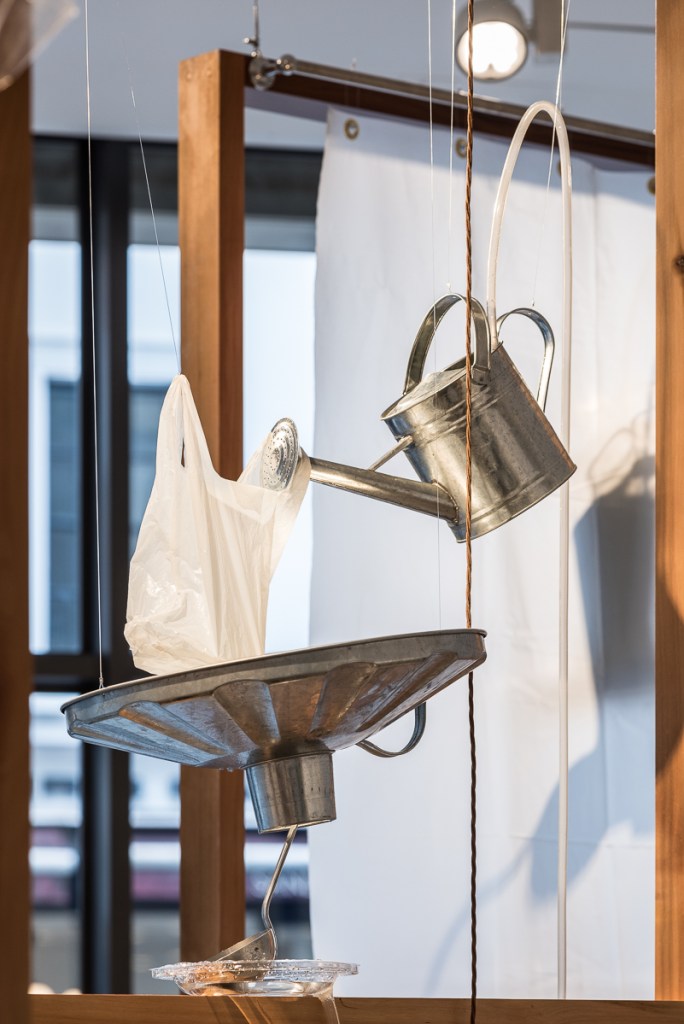
Installation view of Moré moré at White Rainbow, February 2017. Photo: Damian Griffiths; courtesy the artist and White Rainbow, London
Was there a particular moment during your research where you were particularly surprised or moved you?
I don’t think there was a specific moment in time, but the process of checking every station on the Yamanote line (one of Tokyo’s busiest and most important subway services) led to a series of delightful discoveries. I spent over three months checking every exit in all the stations and that was really hard work, because I had a part-time job. I started taking photographs and notes from Nippori station but by the time I made my way back there after three months, new leaks had sprung up. I started to think of the metro system as an ecosystem, a living creature. After the earthquake and tsunami in 2011, there was water everywhere. The leaks were worse than usual, and there were tiny waterfalls all around the metro system. It was almost as if the stations were crying. I suppose it was that revelation that pushed me to begin making something artistic from my findings.
When I see your kinetic installations in person, they remind me of the human body, because the various objects that you have incorporated into them look and sound like beating hearts and lungs.
In a way, they also function very much like human body parts. I’m interested in everyday objects, especially mechanical ones, and I like wandering around parks looking for man-made items. My favourites include wires, bits, and bobs from machines – anything that a magnetic force could act on. We think of urban gardens as being completely natural but that’s untrue: they require cultivation, and they’re built using man-made tools for sure. So the result is something that’s artificial, but organic at the same time – the Botanic Gardens in Tokyo is a good example. The human body isn’t completely ‘natural’ either. With medical and technological advancements all of us can be pushed to challenge the limits of the physical. I like to think of my art as a ‘push-pull’ tension between the artificial and the natural. Once something is released from my hands, it takes on a life of its own.
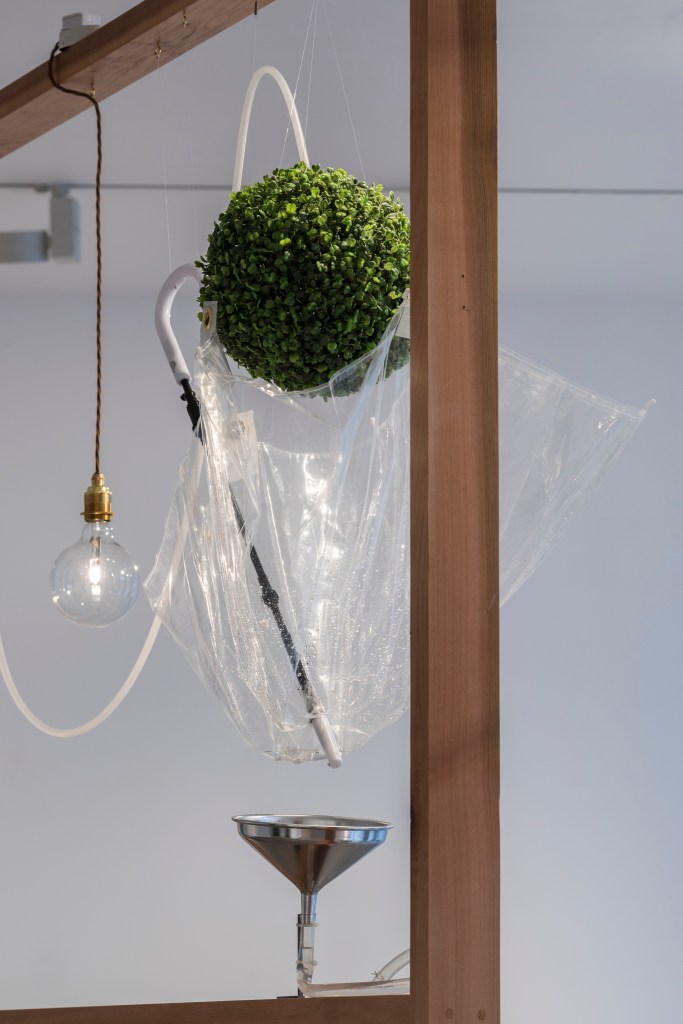
Installation view of Moré moré by Yuko Mohri at White Rainbow, London, in February 2017. Photo: Damian Griffiths; courtesy the artist and White Rainbow, London
How do you approach making an installation?
The most important phase is definitely the collection of objects. I’m constantly thinking about how to engage with the surroundings using these randomly found objects, and if I can evoke a certain narrative. For the Kochi-Muziris Biennial, my kinetic sculptures Calls and Oni-bi were put together using a number of instruments and objects including glockenspiels, horns and magnets. I wanted to allow a space to literally speak for itself: my venue was an abandoned laboratory, and I was drawing on the ancient Japanese belief that our ancestors call out to us during special occasions each year. We may stop using a place, but it’s still full of stories.
I also improvise sometimes because I get new ideas while I’m setting up the installation in the space. Some of the sculptures you see in this exhibition are set up differently from their previous installations, because every gallery and room and place is different. But the basic structure of Moré Moré remains the same. It’s inspired by Duchamp’s ready-mades, The Large Glass and Étant donnés, which I saw at the Philadelphia Museum. The Spanish woman behind me thought The Large Glass was disgusting because of the way it portrays the relationship between the Bride and the Bachelors, and I think that’s probably true, but it’s also riveting at the same time. I love the kinetic nature of his work and I wanted to adapt it to mine. The wooden frames I use for Moré Moré are built to the same dimensions as The Large Glass.
The use of acoustic sound is also important to me. I’ve worked with a number of musicians and I love how sound is so effective in really reminding us of the space we occupy. If I hit this bottle of water now, it will make a ‘ting’ sound that takes you out of the conversation into a different mental place.
Sarah Sze, who also works with found objects, has talked about Étant donnés as an inspiration as well. Do you see any similarities between your work, and can you talk about some of your plans for future projects?
I know Sze’s work, and I think it’s interesting how we react to things and places differently. For me, the focus is always on the intangible aspects of a place, like weight or gravity.
With regard to ideas for new projects, there’s plenty now that Tokyo’s landscape keeps changing in the run-up to the Olympic Games in 2020. They’re replacing all the street lamps with LED ones, which is a pity because I preferred the old ones. They looked like gentle dinosaurs watching over the city. So these days I’ve been going around collecting discarded streetlamps and also visiting disposal areas such as landfills. There’s an interesting spot near Odaiba Bay which has no address, and all the waste in the city has been channelled there recently. When I visited a while ago, it looked almost like a park, with flowers and grass growing from the ground despite it being a landfill. But more unusually, there were also plastic bags bursting up to the surface like jellyfish. I felt like I was looking at a never-before-seen side of Tokyo, and I hope to work these observations into another project.
‘Moré Moré’ [Leaky] is at White Rainbow, London, from 9 February–7 March
Unlimited access from just $16 every 3 months
Subscribe to get unlimited and exclusive access to the top art stories, interviews and exhibition reviews.

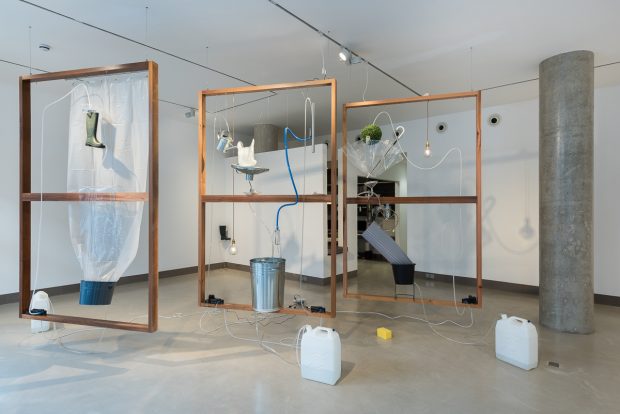
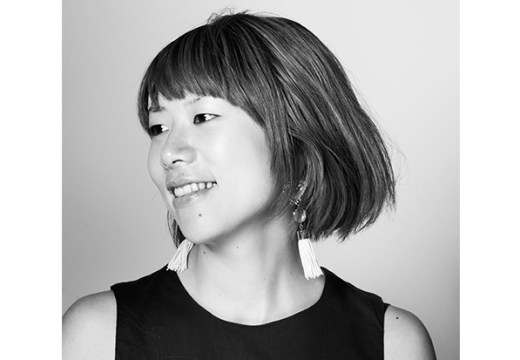
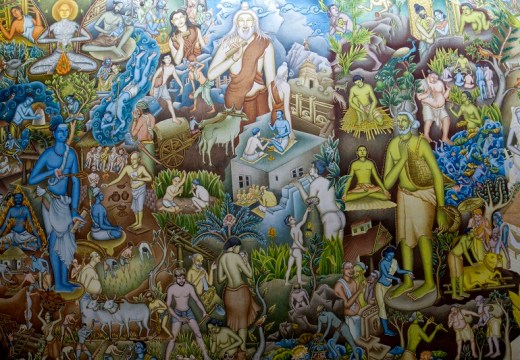
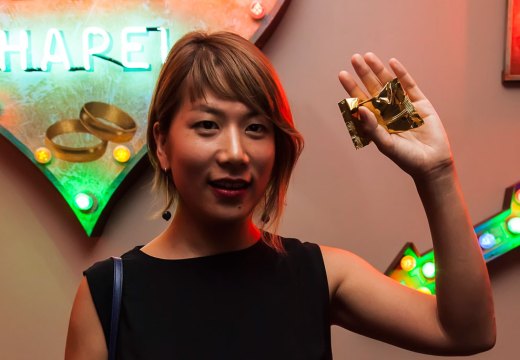









![Masterpiece [Re]discovery 2022. Photo: Ben Fisher Photography, courtesy of Masterpiece London](http://www.apollo-magazine.com/wp-content/uploads/2022/07/MPL2022_4263.jpg)
Has the Fitzwilliam got its rehang right?